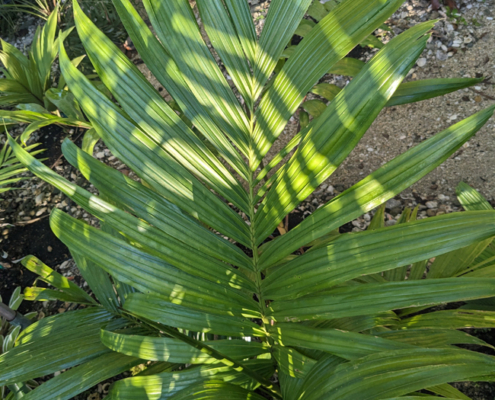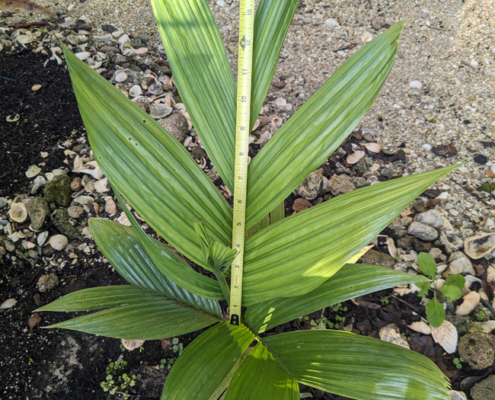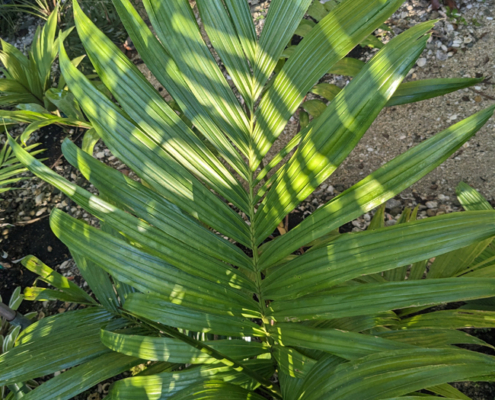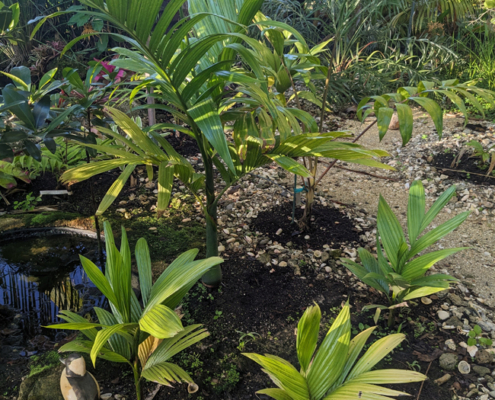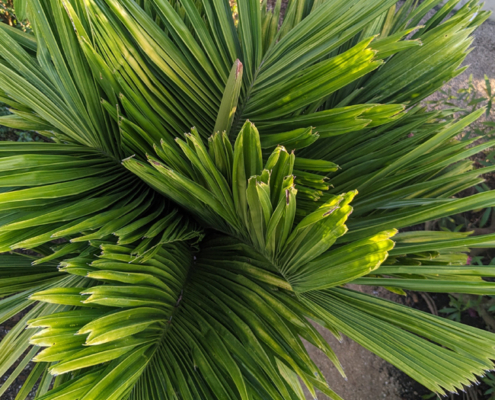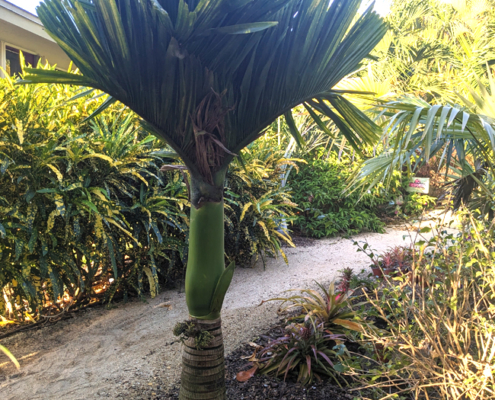Arecaceae
Plant Profile
Areca catechu
(ah-REHK-ah) (kah-TEH-koo)
Subfamily Arecoideae
Tribe Areceae
Subtribe Arecinae
“The fruit flesh on the seed has psychoactive properties (stimulating effects) and in South-east Asia is used as such by chewing on the fruit. It produces euphoria, heightened alertness, sweating, salivation, a hot sensation in the body and an increased capacity to work. The alkaloid arecoline found in the nut, accounts for these effects. However there may be undesirable side effects associated with chewing on the fruit such as an increase in heart rate, blood pressure, sweating and body temperature. Betel chewing also increases plasma concentrations of norepinephrine and epinephrine. The Betelnut is also used as an offering in Hinduism.” – Palmpedia
“A. catechu is a slender palm with a lifespan of generally 60 years but it can reach up to 100 years old. It has a single cylindrical straight-stemmed trunk, with a diameter ranging from 25 to 40 cm, and is conspicuously ringed by the scars of fallen leaves. Capable of reaching 30 m in height, palms are often smaller, especially when grown in full sun. The sheathing leaf bases form a smooth, greyish crown shaft. The pinnate leaves are 1-1.5 m long, with several dozen obliquely-toothed leaflets. The apical pinnae are fused together to form a fishtail-like shape. The branched flower stems emerge from below the crown shaft, and are roughly 1 m long. The small flowers are arranged in triad clusters of two staminate flowers flanking a slightly larger pistillate flower. The orange or red drupes are 5-6 cm long and 4-5 cm wide, varying from spherical to somewhat flattened, and contain a single seed.” – CABI
“The native range of this species is Philippines. It is a tree and grows primarily in the wet tropical biome. It is used as a poison, a medicine and invertebrate food, has environmental uses and social uses and for fuel and food.” – Kew
Origin Map from Kew Royal Botanic Gardens
